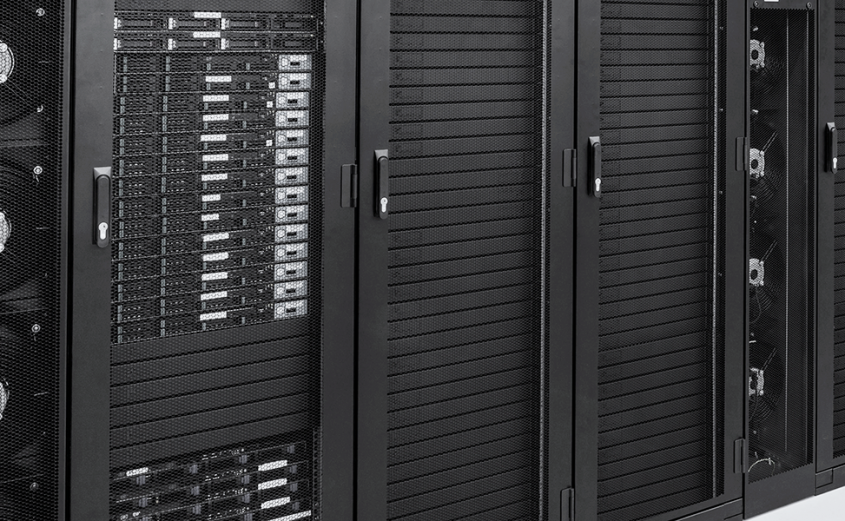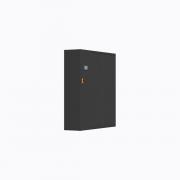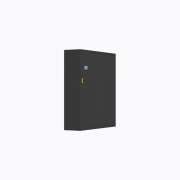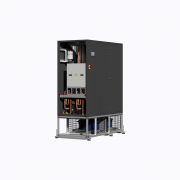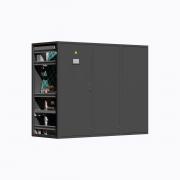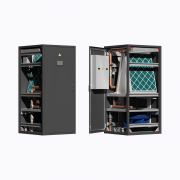Rack cooling for high-density IT applications
Why rack-level cooling?
Heat densities and, consequently, cooling costs rise a lot for modern data centers, making cooling efficiency the stirring topic for data center professionals. The reason for growing heat densities is advance in IT technologies like cloud computing, big data, artificial intelligence, and growth in mobile data volumes.
Locating cooling units close to the heat source is an attractive idea due to higher return air temperature and shorter air paths, resulting in significant cooling efficiency improvement and lifts the capacity of cooling devices.
The conventional cooling method for data centers is the use of precision air conditioners, typically located along the room perimeter: a room-level solution. In contrast to this, row-level solutions with cooling units installed within a row of server racks offer higher cooling efficiency, while the rack-level cooling approach has even greater performance.
Obviously, rack-level solutions like the rear cooling door are the best in terms of cooling efficiency. One might nevertheless question the reliability of the cooling, given the fact that typical rack-based cooling solutions offer weak redundancy capabilities. To remedy this, room or row-level cooling units can be installed as standby. Another alternative is installing a fully redundant rack cooling system, e.g., chilled water In-Rack door in 2N configuration.
Rack cooling is precise, as the cooling coil is located in close proximity to the heat source where no mixing of hot and cold air flows can occur.
Scalability is another major advantage of rack cooling doors. New IT resources can be deployed within a data center very rapidly – compared to other designs of cooling systems. Besides, rack cooling doors retrofit can be implemented quickly and easily, building on the investments and infrastructure available in a data center, and carries a payback time from a few weeks to several months.
Rack cooling solutions
In its portfolio of IT cooling products, Kaltra offers rack cooling solution to target high heat density data centers and local IT installations.
One solution is In-Rack CW/P – a passive cooling door distinguished by fail-safety, which is of paramount importance to colocation and telecom applications. A second alternative is In-Rack CW/A, an active cooling unit equipped with fan blowers and intended to replace the rear rack door.
When the passive cooling doors’ cooling capacity is not enough to cope, Kaltra offers In-Rack CW/A equipped with fan blowers as a solution. In-Rack CW/A is equipped with variable-speed fans to support varying heat load, can be configured for the 2N redundancy model, and features dewpoint control.
In-Rack units are compatible with standard server cabinets with widths of 600 or 800mm and can be attached to the rack either directly or via an adaptor frame.
Both solutions are based on microchannel coils. This solution has a number of practical advantages for both new installations and retrofit applications:
- Low weight, compared to systems equipped with air-water heat exchangers of other art
- Small unit depth
- Low water volume
Yet another customers’ concern is the risk of leakages. For In-Rack doors, the risk is minimized through and the use of a drain pan and pipework shells. Optionally, both passive and active rack cooling solutions can be equipped with a dew point control system.
Most of the identified leakages are caused by units operating improperly, for instance, with exceeding working pressure or installation errors like inadequate grounding, often leading to electrochemical corrosion and, in turn, to leaks. By hiring experienced technicians who are committed to installation, inspection, and commissioning works, customers will get the assurance that the correct steps are taken to avoid leakage issues during the cooling units’ lifecycle.

